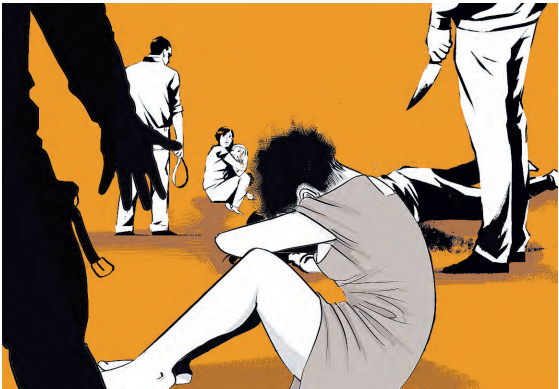
One of the most traumatic experiences I had when about 12 years old occurred when visiting my cousins over a weekend.
As we sat in the girls’ room our conversations beginning on one story which would not be exhaustible narrating before moving to the next, a lady from two houses away burst into the room with terror-filled tearing eyes and in a dishevelled state.
We screamed not only at her surprising entry and the way she looked, but also felt the danger she seemed to be fleeing from might befall us too.
Little did we know then that she was seeking refuge from gender-based violence.
What is gender-based violence (GBV)?
This is any act of violence that is gender-based which results in, or is likely to result in, physical, sexual or psychological harm or suffering whether occurring in public or private life.
Worldwide statistic indicate that 40 per cent of women murdered die due to acts of their partners, while more than 90 per cent of rape victims are women of which 80 per cent know their rapists.
There are three essential things victims and survivors of gender-based violence require.
The first is medical attention.
This entails investigation that shall determine subsequent treatment, procedures to be undertaken and compilation of medical records.
The second requirement for a victim is legal assistance and security.
This entails collection and documentation of forensic evidence and maintaining the chain of evidence, while ensuring the well-being of the victim by providing for including alternative housing if they feel continuously threatened.
The last important requirement is provision of psychological support starting with counselling and management of trauma.
This becomes singularly critical, especially due to stigmatisation associated with gender-based violence that involves molestation, rape, incest, torture and dehumanising acts.
Taking into account the three primary needs a victim of gender-based violence requires, one can now see how ill equipped my aunt was to help a victim who not only fled into her sitting room but sought more security in the inner chamber of the girl’s room.
One thing however my aunt effectively did was to stop the pursuing enraged husband from entering the house by planting herself firmly at the front door.
Her girth and demeanour stopped the man dead on his track.
I should explain that my aunt is a fearless and very intimidating person, especially if she is upset.
But not all victims of GBV have a defender like her.
In Kilifi County a study indicates that out of a population of 380,991 women between the ages of 15 to 49, 171,445 have experienced gender-based violence as victims or witnesses.
Of the same demographic, 25,716 are estimated to be victims of rape or incest.
These very distressing statistics from the rural county of Kilifi may unfortunately be amplified in the essentially urban Mombasa county.
Effective interventions in this field can be costly.
A study done eight years ago found out that the medical cost for first line medical treatment is approximately Sh17,200 per patient, while if there is pursuit for redress and legal processes are instigated, the costs of filing, printing, transport and fees works out to Sh51,600 per patient.
To date I don’t know what happened to my auntie’s neighbour who sought refuge in such a dramatic manner.
Whether she went back to her home and the violence stopped, or whether she went home and it ended tragically or maybe she never went back home again.











